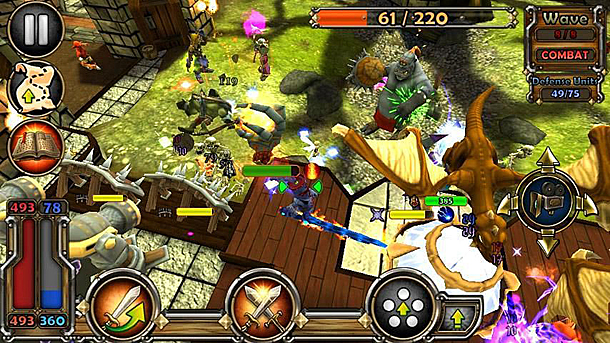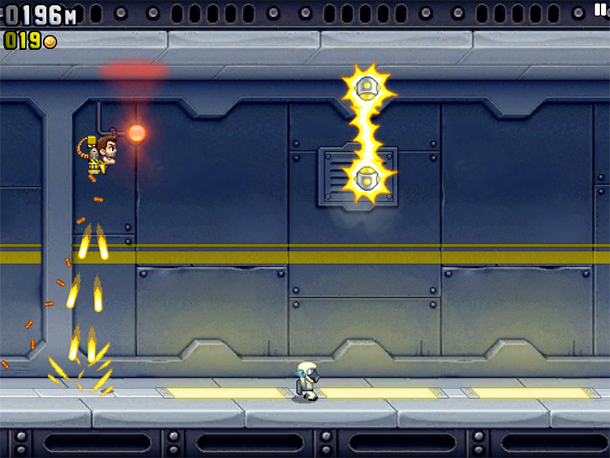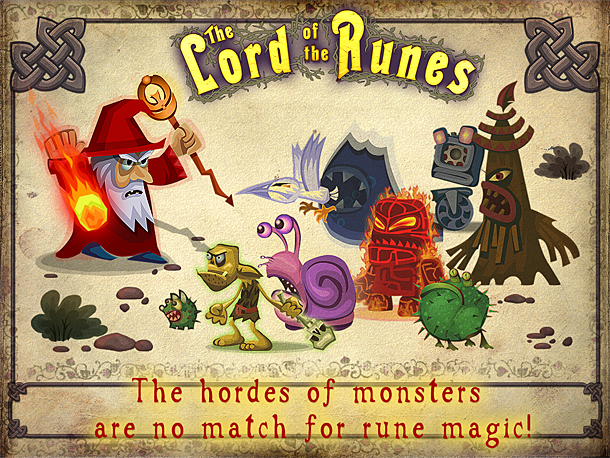Free-to-play games: how to make them successful
The mechanics of free-to-play, which has long been proven in online games on PCs, has gained widespread popularity on mobile platforms over the past year. It is free games with the ability to buy in-game content according to statistics that bring the greatest profit. How to make free-to-play games successful, what their audience wants and how F2P is fundamentally different from other games, read our material based on the publications of creative director and game designer Pascal Luban.

In general, free-to-play (F2P) games are not some kind of new genre, they are a whole revolution in the gaming industry. The emergence of F2P has influenced most aspects and factors in marketing, publishing, distribution, design and development.
')
One of the main advantages of F2P is that, no matter how strange it may sound, large investments are not required at the start.
Of course, the project should be fully thought out, but the volume of the initial content can be much less than what users will receive in the end, say, in six months. So, the publisher Nexon has calculated that a free-to-play game can be released with half the content that is planned to be made available in the end. In Playfish, the percentage of "readiness" can drop to 20%. Everything else is added gradually, after launch.

In addition, there is always the opportunity to correct the shortcomings identified over time. The main thing here - to listen to the comments of the players.
Features free-to-play
From the players' point of view, the design of social games such as FarmVille and Combat Arms is very different. But, nevertheless, despite all the differences, all F2P games are created by the same rules - unlike traditional games.
1) Instant satisfaction
Having given money for a game, a person will be forced to play it. Even if not everything goes smoothly from the very beginning, hardly anyone will throw out the disc - the money will not be returned. The user has to spend some time playing the game, after which the pleasure of the process may appear.
With the free-to-play game, the situation is different: the developer should immediately interest the user in order to encourage him to spend time. It is the first game session that determines whether a person will play or not. Therefore, the primary task of game designers is to get the user (no matter how strange it may sound) to have fun in the first few minutes.
2) Pleasant frequency
It is important to remember the rule: the longer a person plays, the higher the likelihood that he will buy something. Therefore, it is necessary to think about the "chips" that will hold the attention of users and force them again and again to return to the game.
Short but very intense gaming sessions have proven themselves well, so that you do not need to spend a lot of time, and at the same time I would like to do something else.
How to keep a user?
1) The main rule: the faster the better.

Downloading F2P applications is only half the battle, then a potential player needs to be brought from the menu to the actual gameplay, and not everyone is able to do this.
If in online F2P problems can arise at the stage of registration, client download, then in a mobile application, numerous icons, buttons, long explanations, etc. can become an obstacle.
The interface should be as simple and clear as possible so that as few steps as possible separate the player from the game.
Jetpack Joyride and Triple Town are a great illustration of this thought. Just click on the icon and you are already in the game.

2) Limit functionality
At the first stages it is better to restrict yourself to basic functionality, additional options and features can be added later. If you fill up the user with multipage tutorials, offer him to make a lot of different settings, then you can easily lose him. Give it a little play and feel, and then add something else.
On this, for example, the creators of The Lord of the Runes played, giving access to the full list of spells only at the moment when the player became familiar with the basic spells.

The player may be aware of additional features from the very beginning, but these features are not immediately available. The task of a game designer, according to Pascal Luban, is that the player in the course of the game thinks something like this:
1. I understand what I have to do
2. I can easily do it
3. I managed to do it
4. I received an award for it
5. I have a short-term goal, and I understand how it can be achieved
Plus, do not forget that the first time users should not lose - so he will have the motivation to learn the game. Adding a progress bar, gradually filling as you go through the tutorial, will help to arouse curiosity.
Develop for new audiences
If earlier free-to-play were focused mainly on hardcore audiences (MMO and FPS genres), then modern freemium projects can be designed for anyone. Take, for example, the iOS platform, where “ordinary” people, not gamers, can act as consumers of game content. It is important to determine your target audience, study its expectations and give it exactly what it wants.
According to the materials of the portal App2Top.ru

In general, free-to-play (F2P) games are not some kind of new genre, they are a whole revolution in the gaming industry. The emergence of F2P has influenced most aspects and factors in marketing, publishing, distribution, design and development.
')
One of the main advantages of F2P is that, no matter how strange it may sound, large investments are not required at the start.
Of course, the project should be fully thought out, but the volume of the initial content can be much less than what users will receive in the end, say, in six months. So, the publisher Nexon has calculated that a free-to-play game can be released with half the content that is planned to be made available in the end. In Playfish, the percentage of "readiness" can drop to 20%. Everything else is added gradually, after launch.

In addition, there is always the opportunity to correct the shortcomings identified over time. The main thing here - to listen to the comments of the players.
Features free-to-play
From the players' point of view, the design of social games such as FarmVille and Combat Arms is very different. But, nevertheless, despite all the differences, all F2P games are created by the same rules - unlike traditional games.
1) Instant satisfaction
Having given money for a game, a person will be forced to play it. Even if not everything goes smoothly from the very beginning, hardly anyone will throw out the disc - the money will not be returned. The user has to spend some time playing the game, after which the pleasure of the process may appear.
With the free-to-play game, the situation is different: the developer should immediately interest the user in order to encourage him to spend time. It is the first game session that determines whether a person will play or not. Therefore, the primary task of game designers is to get the user (no matter how strange it may sound) to have fun in the first few minutes.
2) Pleasant frequency
It is important to remember the rule: the longer a person plays, the higher the likelihood that he will buy something. Therefore, it is necessary to think about the "chips" that will hold the attention of users and force them again and again to return to the game.
Short but very intense gaming sessions have proven themselves well, so that you do not need to spend a lot of time, and at the same time I would like to do something else.
How to keep a user?
1) The main rule: the faster the better.

Downloading F2P applications is only half the battle, then a potential player needs to be brought from the menu to the actual gameplay, and not everyone is able to do this.
If in online F2P problems can arise at the stage of registration, client download, then in a mobile application, numerous icons, buttons, long explanations, etc. can become an obstacle.
The interface should be as simple and clear as possible so that as few steps as possible separate the player from the game.
Jetpack Joyride and Triple Town are a great illustration of this thought. Just click on the icon and you are already in the game.

2) Limit functionality
At the first stages it is better to restrict yourself to basic functionality, additional options and features can be added later. If you fill up the user with multipage tutorials, offer him to make a lot of different settings, then you can easily lose him. Give it a little play and feel, and then add something else.
On this, for example, the creators of The Lord of the Runes played, giving access to the full list of spells only at the moment when the player became familiar with the basic spells.

The player may be aware of additional features from the very beginning, but these features are not immediately available. The task of a game designer, according to Pascal Luban, is that the player in the course of the game thinks something like this:
1. I understand what I have to do
2. I can easily do it
3. I managed to do it
4. I received an award for it
5. I have a short-term goal, and I understand how it can be achieved
Plus, do not forget that the first time users should not lose - so he will have the motivation to learn the game. Adding a progress bar, gradually filling as you go through the tutorial, will help to arouse curiosity.
Develop for new audiences
If earlier free-to-play were focused mainly on hardcore audiences (MMO and FPS genres), then modern freemium projects can be designed for anyone. Take, for example, the iOS platform, where “ordinary” people, not gamers, can act as consumers of game content. It is important to determine your target audience, study its expectations and give it exactly what it wants.
According to the materials of the portal App2Top.ru
Source: https://habr.com/ru/post/137423/
All Articles